Finlayids 2021: prediction of activity
to the list of predictions
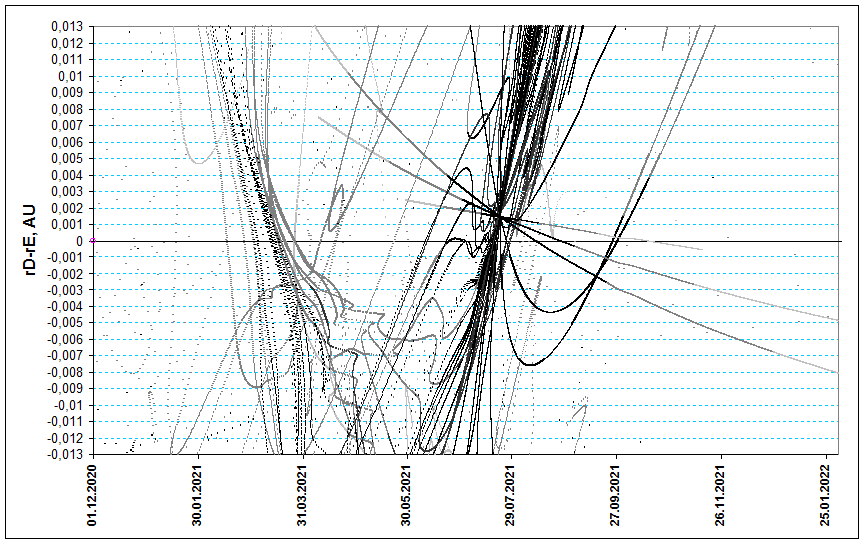
Fig. 1. Space-temporal projection of the Finlayids trails parts onto their minimal distance passages in 2021 (correspondence between colours of the particles and their ejection velocities can be seen here).
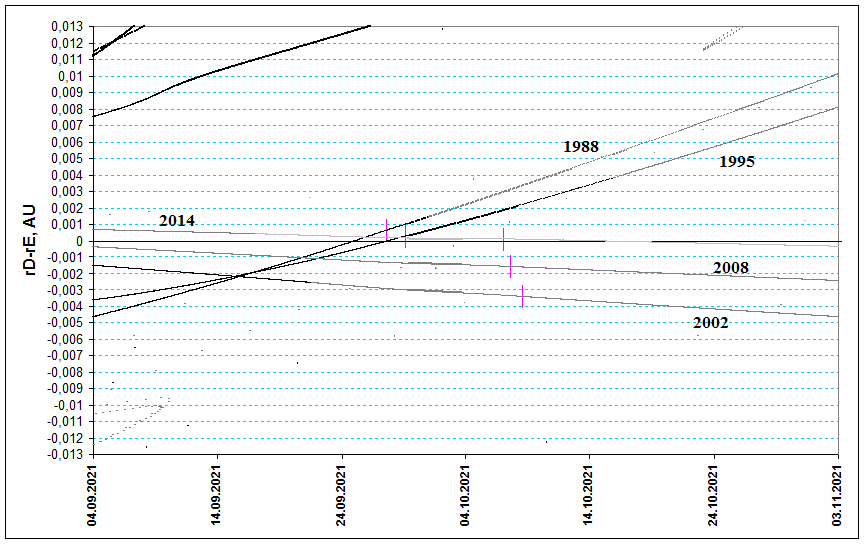
Fig. 2. Detailed space-temporal projection of Finlayids trails parts onto their minimal distance passages in 2021 (correspondence between colours of the particles and their ejection velocities can be seen here).
In 2021 the Earth is expected to pass close to some young trails of the comet 15P/Finlay. This comet hasn't produced any detected meteor outbursts on the Earth but in 2021 a new meteor shower has very good chances to born as after pertubation from Jupiter the cometary orbit passes very close to the Earth's one and will be close to it in coming decades. The orbit of the comet 15P has quite low inclination, about 6°, so despite many other streams, even some small perturbations of dust trails could lead in relatively big shifts of the intersection points between their orbits and the Earth's one resulting in significant, measured in days and weeks, shifts of maximum dates for different trails.
The first trail which is expected to pass close to the Earth in 2021 is the 1988 trail. Parameters of encounter are the following: rD-rE=0.00059 AU, ejection velocity 19.7 m/s, trail density is 175.4% of that of 1 revolution Leonids trail, time of maximum is 14:02 UT on September 27, theoretical radiant is RA=264.1°, Dec=-60.5°
The second is 1995 trail. Parameters of encounter are the following: rD-rE=0.00023 AU, ejection velocity 18.1 m/s, trail density is 217.8% of that of 1 revolution Leonids trail, time of maximum is 2:33 UT on September 29, theoretical radiant is RA=261.6°, Dec=-57.7°
The third is 2014 trail. Parameters of encounter are the following: rD-rE=0.00007 AU, ejection velocity 67.2 m/s, trail density is 1440.0% of that of 1 revolution Leonids trail, time of maximum is 0:54 UT on October 7, theoretical radiant is RA=255.7°, Dec=-48.3°
The fourth is 2002 trail. Parameters of encounter are the following: rD-rE=0.00342 AU, ejection velocity 25.5 m/s, trail density is 513.5% of that of 1 revolution Leonids trail, time of maximum is 14:34 UT on October 7, theoretical radiant is RA=255.7°, Dec=-47.7°
The fifth is 2008 trail. Parameters of encounter are the following: rD-rE=0.00160 AU, ejection velocity 35.0 m/s, trail density is 764.3% of that of 1 revolution Leonids trail, time of maximum is 15:05 UT on October 7, theoretical radiant is RA=255.5°, Dec=-48.3°
The most perspective are the first three encounters with 1988, 1995 and 2014 trails. It is quite difficult to estimate expected activity due to absence of data on previous Finlayids outbursts, but perhaps some significant activity outbursts should be expected, with ZHR of several hundreds or maybe even stronger that 1000 meteors for each separate outburst.
Visibilite maps for all five expected outbursts are given below:
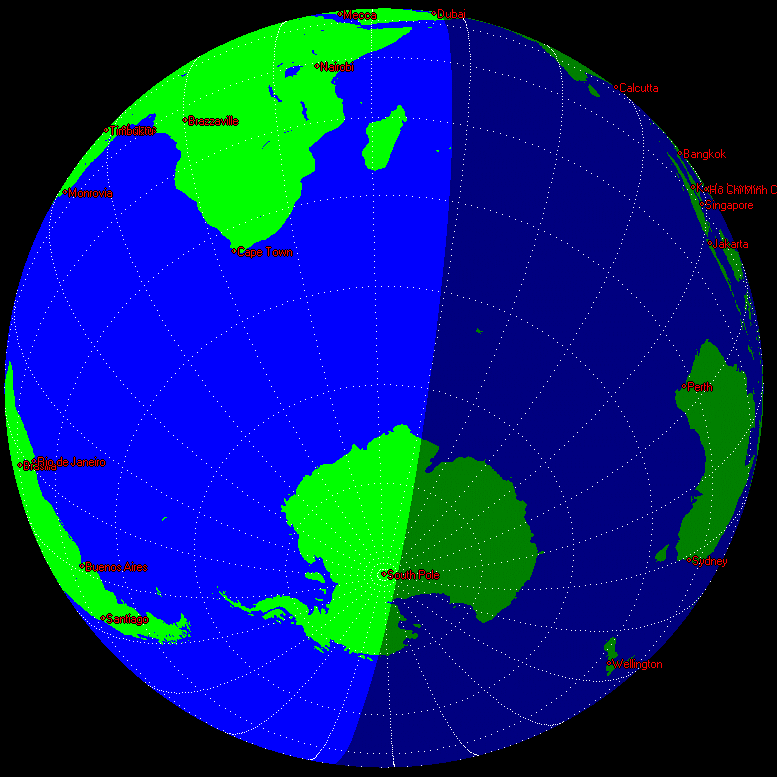
Fig. 3. The Earth as seen from coming Finlayids meteors (RA=264.1°, Dec=-60.5°) during the expected maximum time of outburst from 1988 trail at 14:02 UT on September 27.

Fig. 4. The Earth as seen from coming Finlayids meteors (RA=261.6°, Dec=-57.7°) during the expected maximum time of outburst from 1995 trail at 2:33 UT on September 29.

Fig. 5. The Earth as seen from coming Finlayids meteors (RA=255.7°, Dec=-48.3°) during the expected maximum time of outburst from 2014 trail at 0:54 UT on October 7.
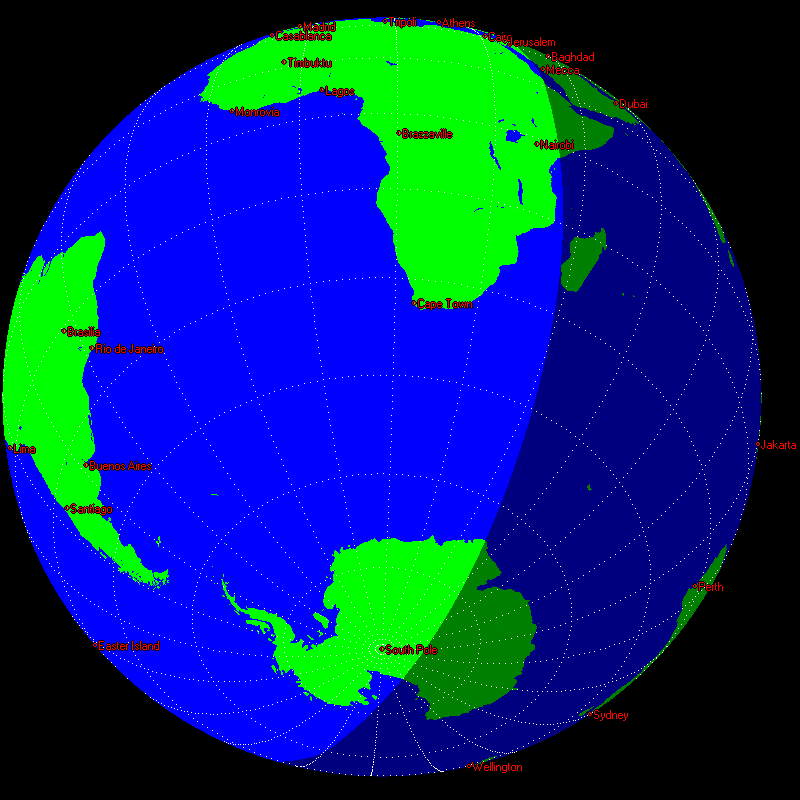
Fig. 6. The Earth as seen from coming Finlayids meteors (RA=255.7°, Dec=-47.7°) during the expected maximum time of outburst from 2002 trail at 14:34 UT on October 7.
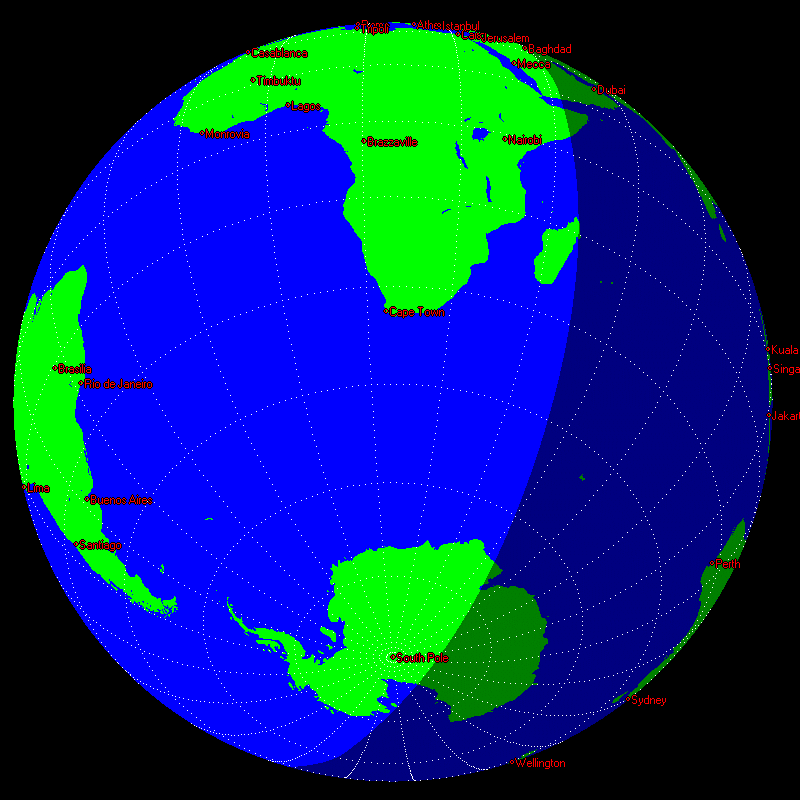
Fig. 7. The Earth as seen from coming Finlayids meteors (RA=255.5°, Dec=-48.3°) during the expected maximum time of outburst from 2008 trail at 15:05 UT on October 7.
References
1. "Comet's dust 2.0" program by S. Shanov and S. Dubrovsky. [Used for orbital computations.]
2. E. Lyytinen, T. van Flandern "Predicting the strength of Leonid outbursts", 2000, Earth, Moon, and Planets, P. 149-166.
3. Jenniskens P. Meteor showers and their parent comets, 2006, 780 p. 4. Kasuo Kinoshita, http://jcometobs.web.fc2.com/ [Orbital elements of the comet 15P/Finlay]
5. Hewgill G. Xearth 1.1.0 (Software program), 2003.